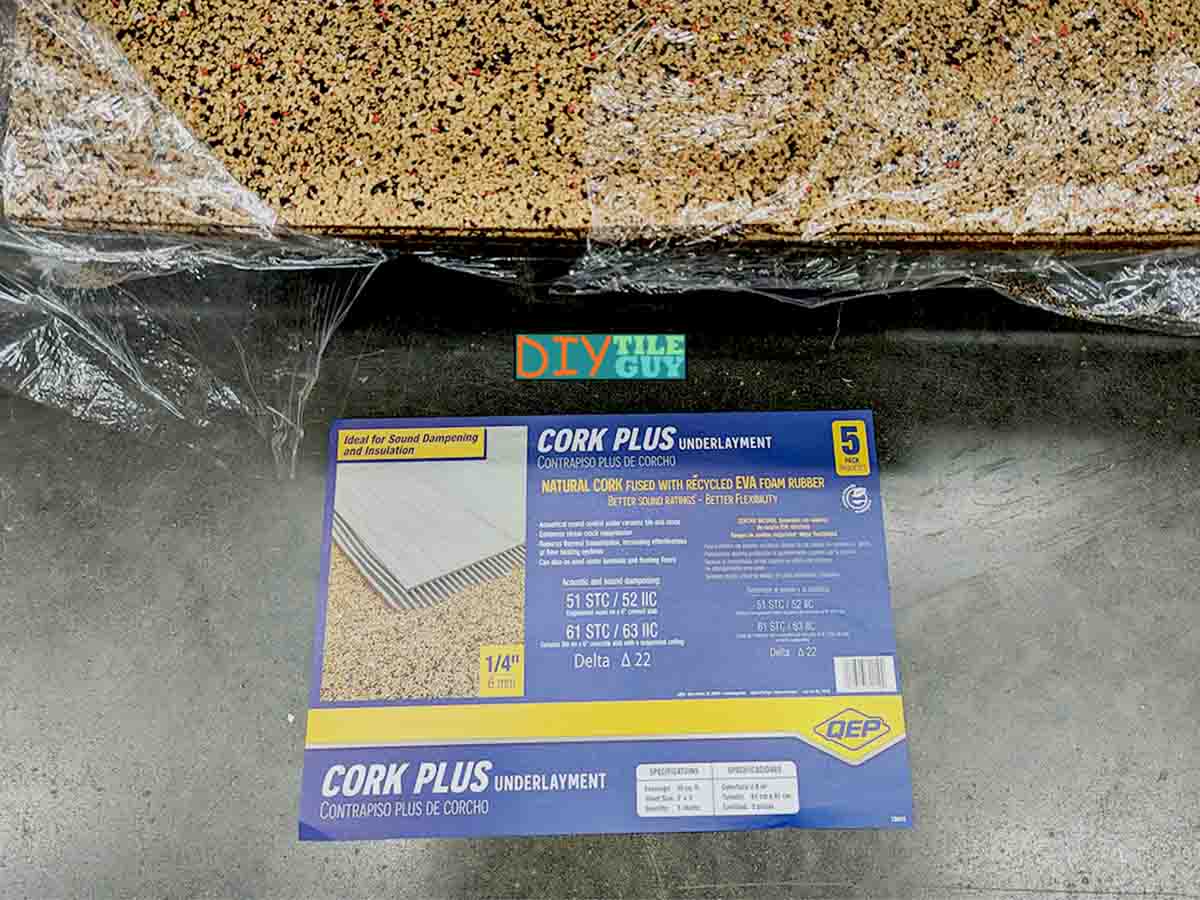Yes. You will need to insulate your concrete floor before installing tile floor heat.
Please don’t go to the time and expense of installing electrically heated floors only to have it heat the entire concrete slab.
The questions are:
- How does insulating concrete work?
- What products can I use?
Let’s dive in!
Estimated reading time: 4 minutes

Why Radiant Heat Insulation is Necessary
Problem: your basement floor is cold.
Solution: install an electric floor heat system over it.
Problem solved? Not quite.
Yes, tile is a great flooring choice for conducting heat. But an equally great conductor is concrete. Consequently, unless something is separating the layers the electric heat will warm the entire concrete floor and tile all as one unit.
At least it will try.
You need to separate the heat from the concrete. As usual, the devil is in the details.
OK. How do I Insulate a Concrete Floor?
For starters, it helps to get an idea of how cold your concrete floor is. For example, is it a(n):
- Basement Floor?
- Elevated concrete floor?
Determining how cold it gets can help determine your plan of action.
Basement Floor Insulation
If it’s a basement floor, then it sits right on the ground and is going to get quite cold.
Further, basements and other slab-on-grades are not typically insulated underneath. So they are going to absorb the ground temperature and you’re going to need more drastic measures to separate the radiant heat from the cold.
Insulating Elevated Slabs
If it’s elevated, or perhaps insulated underneath, then you may not need as much insulation.
In fact, it’s very likely you could get by with a product like Ditra-Heat-Duo as the sole solution. This would be a great choice if this is your situation.
What Products can I use for Concrete Floor Insulation?
This post is going to talk about solutions that meet the following criteria:
- For use with electrically heated floors
- Can be installed over concrete
- Are meant to have tile floors installed over them
- Meet tile industry guidelines
Foam Backer Board
Foam backer board building panels are a great choice for insulating your tile floor over a concrete slab.
Unlike cement board, these foam panels can be installed directly over a concrete subfloor. Further, the foam core does a lousy job of conducting heat which is good for your electric bill. That’s exactly what you want.

Cork Underlayment
Cork underlayment for tile is what we used to use before these other products came out. It always seemed like an odd choice to me but that’s what was recommended.
You can still use cork but it’s not always simple to find. A brand that still makes 1/4 inch cork underlayment is QEP but I’m sure there are others.
Cork is applied with a glue-type adhesive and then the tile is installed with an appropriate tile thinset mortar.
Ditra-Heat-Duo
Ditra-Heat-Duo is a nice product but it can be misunderstood. It does not have insulating super-powers but it can help increase the efficiency of a radiant heat system.
Please see my post on Ditra-Heat-Duo to learn more about how this product should and should not be used.
Summary
If you want to heat your cold concrete floor before installing tile then you’re going to need to insulate in between the electric floor heat system and the concrete subfloor.
There is more than one way to do it and it depends on how cold your concrete will get.
If it’s slab-on-grade, you will need more insulation than if it’s an elevated concrete floor.
Finally, don’t make the mistake of not using any insulation or thermal break. You will be wasting your money and putting too much stress on your electric floor heat system.